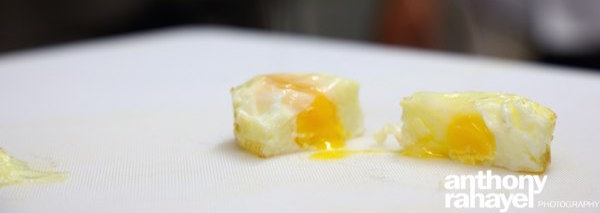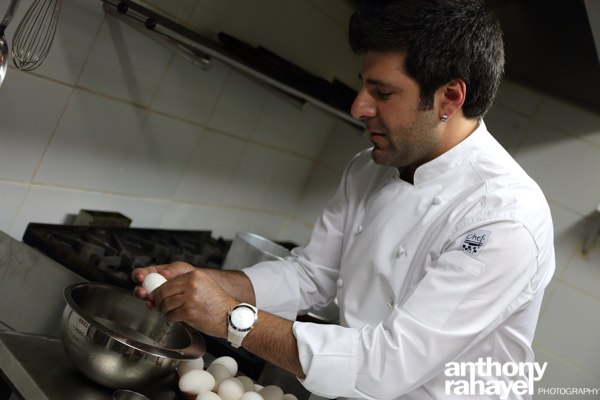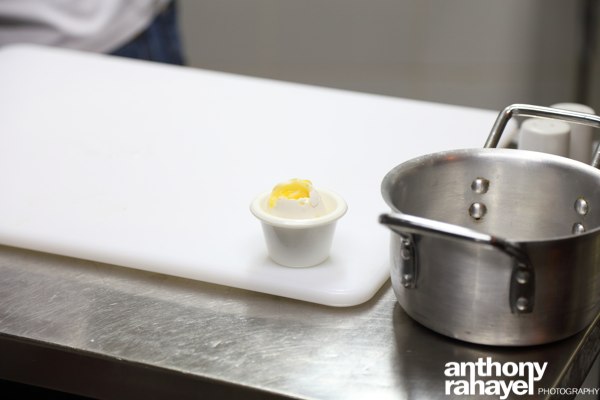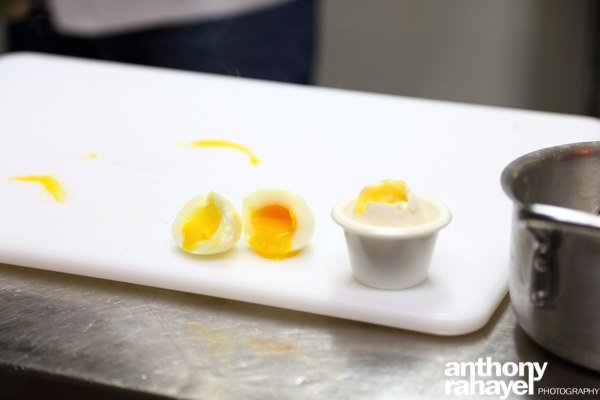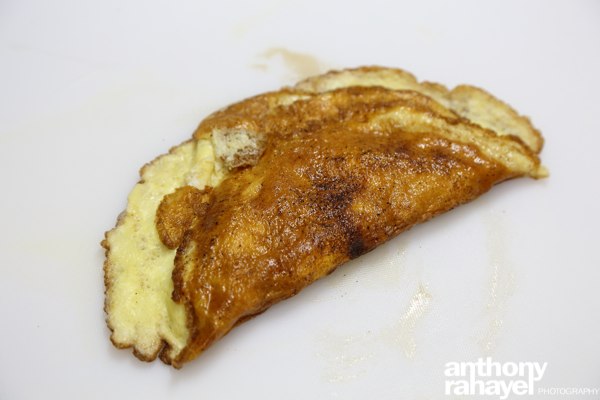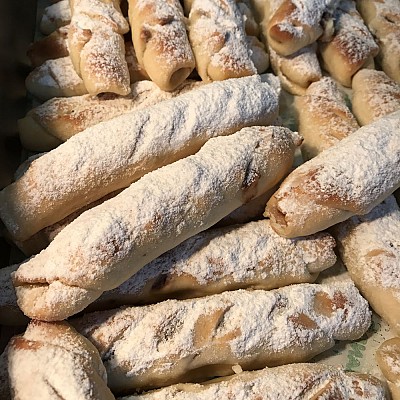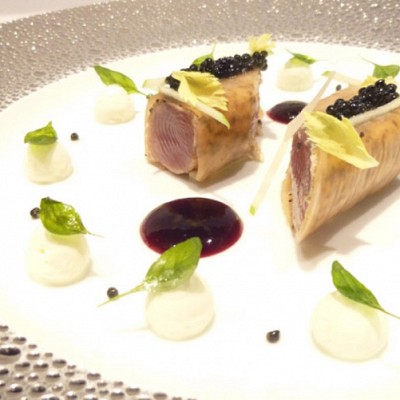It's Sunday morning... let's make some eggs with the family. How much do we know about this special oval creation of nature. How much time it needs to cook? How many ways and possibilities of cooking them are there? When should we add salt? Boiled, fried, pan friend, oven cooked ... are some of the many possibilities when it comes to cooking and eating eggs. With the help of my friend Chef Marco Abed, I decided to show you all the world of possibilities an egg has to offer. Let's start!
*Marc has an interesting resume. He has worked in esteemed restaurants like NOMA, as well as worked along side many international chefs like Alain Ducasse.
Definition:
Popular choices for egg consumption are chicken, duck, quail, roe, and caviar, but the egg most often consumed by humans is the chicken egg, by a wide margin. Egg yolks and whole eggs store significant amounts of protein and choline, and are widely used in cookery. Chickens and other egg-laying creatures are widely kept throughout the world, and mass production of chicken eggs is a global industry. In 2009, an estimated 62.1 million metric tons of eggs were produced worldwide from a total laying flock of approximately 6.4 billion hens.
Cooking Issues:
- Egg yolk coagulates, or solidifies, when it reaches temperatures between (65 and 70°C). Egg white coagulates at slightly higher temperatures, between (63 and 73°C).
- Salmonella is killed instantly at 71 °C, but is also killed at somewhat lower temperatures if held there for sufficiently long time periods.
- If a boiled egg is overcooked, a greenish ring sometimes appears around egg yolk due to the iron and sulfur compounds in the egg. It can also occur with an abundance of iron in the cooking water. The green ring does not affect the egg's taste; overcooking, however, harms the quality of the protein. Chilling the egg for a few minutes in cold water until it is completely cooled may prevent the greenish ring from forming on the surface of the yolk.
1-The French soft Egg (oeuf a la coq) Put water in a small pot and get the water boiling. Add salt, carefully put the egg(s) into the water. Set the timer for three-minutes. When the timer goes off take all the eggs out of the pan and dump them into cold water to stop the cooking. Cut its head, mix the inside and enjoy it with a small soon or by putting bread sticks inside.
2-The Six-Minute Egg (perfect on toasted bread for breakfast):
Put water in a small pot and get the water boiling. Add salt, carefully put the egg(s) into the water. Set the timer for six-minutes. When the timer goes off take all the eggs out of the pan and dump them into cold water. The consistency is here harder than the 3minutes one. The white is cooked but the yellow is still watery and soft.
3- The hard boiled egg (The fully set egg):
Put water in a small pot and get the water boiling. Add salt, carefully put the egg(s) into the water. Set the timer for nine-minutes. When the timer goes off take all the eggs out of the pan and dump them into cold water. Here you have a fully cooked egg. The ones you can use in a salad or for Easter
NB: Dumping eggs in cold water and ice cubes stop the egg from cooking.
4-Crispy deep fried egg (The original):
Deep-fried eggs are just like poached eggs, but with oil instead of simmering water. You heat vegetable oil in a shallow skillet (the oil should approach the edge, then break the egg gently into the oil, and use two spoons to pull the white around the yolk, as you would while poaching. Once the white starts to brown, you can remove it with a slotted spoon to a paper towel to drain. Serve it as soon as possible, because the eggs deflate rather quickly. Sprinkled with a pinch of salt and pepper. “VOILA”
5-Poached Eggs (lowest calories and great for salads):
First bring water in a saucepan to almost boiling. If the water is already boiling, lower the heat until it is no longer boiling. Place the cylinder on the surface of the hot water. Crack an egg into the cylinder, gently drop the egg. Wait around 5 minutes till the egg is finished. It's another way of cooking the egg, using water instead of oil. It's 100% healthy.
6-Our Traditional way of a Pan-Fried Egg (What we wrongly call fried eggs):
Heat the butter in a non stick pan over a low heat, once the butter has melted Crack the egg. If you're cooking more than one, be careful not to crowd the pan. Cover the pan for the duration of the cooking to help speed up the process, which results a perfectly cooked egg and leave for about 4 minutes, then check the white if cooked, lift out, season gently, and serve.
7-The Baked Egg:
Preheat the oven to 180degrees C. Brush a cup of a muffin with a bit of butter. Break an egg into the cup, gently breaking yolk sprinkle with salt and pepper. Bake in the oven around 10 minutes. Check eggs, if they are done, if not, continue cooking, checking every minute or so.
8-Beaten Eggs (Omelette):
Crack the eggs into a mixing bowl and beat them until they turn a pale yellow color. Heat a non-stick pan over medium-low heat. Add the butter and let it melt. Add the beaten eggs in the pan and cover for the duration of the cooking to help speed up, season to taste with salt and black pepper and wait around 7 minutes. Transfer to a plate when the eggs are set but still moist and soft. Eggs are delicate, so they'll continue to cook for a few moments after they're on the plate.
Tips and Tricks:
1- How to Tell If Eggs Are Raw or Hard Boiled:
- Lay the egg on its side on a smooth, hard surface
- Spin it with your fingers.
- If the egg remains still, it is uncooked.
- If the egg spins fast, then the egg has been hard-boiled.
2- Adding salt to water:
Adding salt to water results in a phenomenon called boiling point elevation. The salt increases the water temperature. If you add salt to water, be sure to add it before boiling the water. Adding salt to water that is already boiling may cause the water to splash up and boil more vigorously.
A super simple way to separate the egg yolk from the egg white:
Interesting to know, isn't it?


















